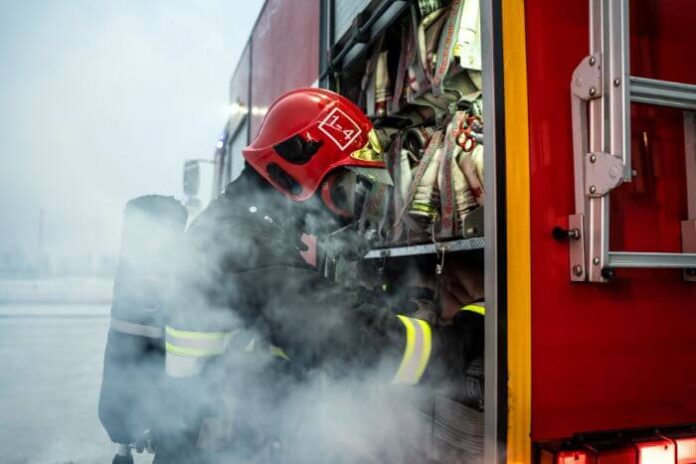A commercial fire can be catastrophic for building owners or managers. Structural damage can cost thousands of dollars in repair or restoration costs. Your business could close for weeks or even months, resulting in lost revenue. Fortunately, taking immediate action after a commercial fire can help get your business back up and running quickly.
Preventing Commercial Fires
If you manage or own a commercial building, minimizing the risk of fire is crucial. Here are some practical ways to avoid commercial fires in the first place.
- Check extension cords or power strips. Routinely look for fraying, short-circuiting, or overloading indicators on electrical cables and extension cords.
- Use heating appliances wisely. Turn off space heaters before leaving a room. Plug all heating appliances directly into a wall outlet, not an extension cord.
- Conduct regular fire drills. Clearly label escape routes and practice fire drills. Remove clutter and obstacles from exit paths. Make sure all windows or screens can open.
- Maintain fire protection equipment. Inspect smoke alarms and fire sprinklers to ensure working order. Train your staff members to use fire extinguishers correctly.
- Separate flammable materials. Store flammable and combustible materials in a dry, cool, ventilated area. Use approved containers and keep them away from heat sources or incompatible substances to avoid toxic chemical reactions.
- Follow the latest OSHA guidelines. OSHA has protocols to ensure both fire protection and prevention. These guidelines cover hazardous material storage, fire equipment and alarm system maintenance, and other preventive measures.
Steps to Take After the Fire
Sometimes, commercial fires occur despite reasonable safety efforts, or your business winds up in the path of a wildfire. Here’s how to respond in the event of a fire emergency.
- Secure and protect the building. Disconnect the gas, water, and electricity until an inspector confirms that restoring power is safe. Cover roof holes with a tarp, board up windows and exterior doors, then arrange for security to prevent vandalism.
- Document the extent of damage. Document all visible damage after the fire department finds your business safe to enter. Take photos of soot-covered walls, furniture, office supplies or machines, and inventory. Keep thorough documentation, but hold off on any repairs until contacting your insurance provider.
- Notify the insurance company. Contact your insurer to start the claims process. Get a claim number and a potential date for an adjuster to visit the premises.
- Contact an emergency restoration service. Fire damage remediation is complex, so leave this task to professionals. These technicians have all the tools, experience, and resources to handle each step of the clean-up and restoration process. In many cases, they will also help you coordinate the insurance claims.
- Inform all your business stakeholders. Large fires often cause businesses to close temporarily. Contact all employees, business partners, credit card companies, suppliers, vendors, and customers to inform them of business operation changes. If you rent this building, make sure your landlord knows about the situation, too. Determine if the fire affected any software or digital tools and seek help with data recovery.
Common Types of Commercial Fire Damage
- Structural Damage: Walls, ceilings, and floors might need replacement repairs.
- Smoke and Soot Damage: Smoke can permeate surfaces, causing discoloration or odors that require professional removal.
- Water Damage: Firefighters’ efforts can leave behind potential water damage.
- Electrical and HVAC Systems: Evaluate and repair damages to your business’s heating and cooling systems.
- Lost Inventory: Smoke, flames, or water can ruin the merchandise you plan to sell.
Additional Commercial Fire Safety Resources
Plan ahead before a commercial fire strikes with the following disaster recovery resources. Be sure to pass these resources along to key business personnel so everyone can access the critical fire safety information and necessary precautions.
- OSHA Resources for Wildfire Protection
- FEMA programs for Businesses and Organizations
- United Way Resources for Disaster Survivors
- U.S. Fire Administration for Workplace Fire Safety







